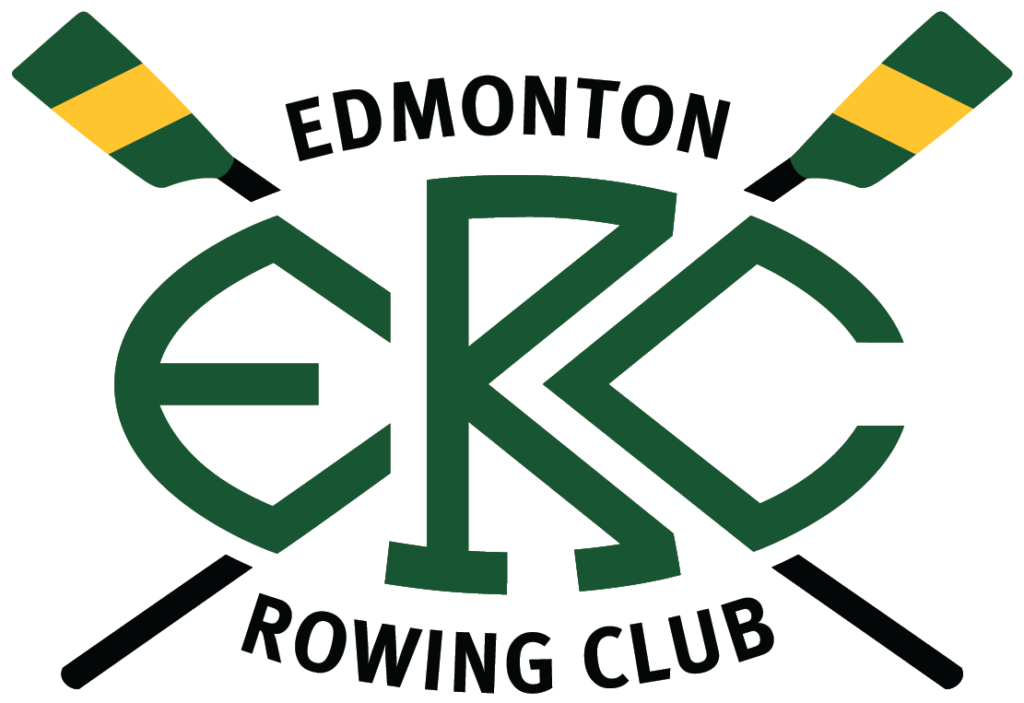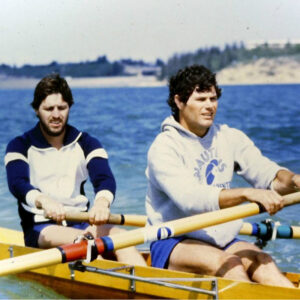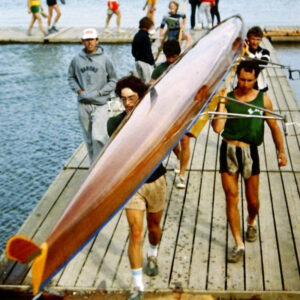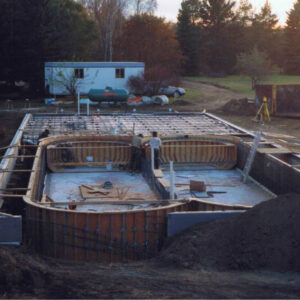History of the ERC – The Beginning
By Art Monk
During a cold winter night in early 1972, John Bell traipsed around the U of A campus putting notices up on bulletin boards. It was an invitation to anyone interested in starting a rowing club in Edmonton to contact him. John had become hooked on rowing while attending Ridley College in St. Catharines.
Dieter Lueloff, a former member of the West German national team, was living in Edmonton with his wife at the time. His wife saw the notice and passed on John’s phone number. Within a day, he contacted John and the two got together and organized a meeting for anybody interested in starting a rowing club. The five men who attended the meeting would lay the foundation for rowing in Edmonton:
John Bell – the first president of the Club, rowed at Ridley College in St. Catharines
Dieter Lueloff – rowed for the Berliner Ruder Club, member of the West German National Team (National Youth Champion – Quad 1960 & National Junior Champion – Eight 1962)
David MacDonald – member of the Schoolboy Championship four with John at Ridley College
Peter Egermayer – sculler from the Czechoslovakian National Team
Art Monk – past president of the Winnipeg Rowing Club
John made arrangements with the Calgary Rowing Club to borrow a four-oared shell for the season and have the boat temporarily stored at the Mayfair Golf Club, at the foot of Groat Road bridge. It turned out to be an ancient craft in much need of repair. The boat was so old that Art’s father, upon hearing the name on the bow, remembered rowing against it on the Red River in Winnipeg when it was owned by Kenora Rowing Club in the 1930’s. Along with a number of problems with seats, slides, and footboards, it leaked at a joint in the middle. The group spent countless hours refurbishing the boat to a point where it was rowable.
At this time, ground zero for the club was at the home of John’s parents, Dr. Bell and Mary Bell, who were so very kind to accommodate all the comings and goings and providing the use of the infamous VW micro bus for club activities. The Bells provided a haven during those early days and were very supportive of the efforts to get a rowing club established in Edmonton.
As soon as the ice started to break up, the group of five started launching below the south side of Groat Road bridge and rowing up the inside of the curve in the river. This was necessary to avoid the logs, ice, flotsam and jetsam that came down the river and was flung to the outside of the curve just west of the bridge. This was where the Club really began. It was below this bridge that the founding five stood together, shook hands, and committed to winning the Alberta Championships in Calgary in July and entering Canadian Henley in early August. At the time, they did not have any winter training but were full of excitement about rowing for Edmonton. They managed to work out without a coach on the Saskatchewan River until torrential rainstorms hit northern Alberta. Unable to continue their daily workouts on the river because of the huge volume of water and debris, they moved their operations out to Saunders Lake, a long narrow body of water about a mile east of Leduc.
After the move to Saunders Lake, they would meet every day on the U of A campus and John would drive them down to the rowing site in his VW micro bus. The boat was stored in an open field with a tarp over it, behind some barbed-wire fencing to keep the cows from stepping on it. Practices started with a wet launch and then go through a series of drills and workouts, being very careful to avoid obstacles along the margin of this narrow lake. They marked a 500 meter course along the shore in oder to compare times with their future competition. By this time, the crew had settled to Luelofff (stroke), Egermayer, Bell, and Monk (bow) as Dave MacDonald had moved away for a summer job.
In June of 1972, Dieter was in hospital after having his tonsils removed and was unable to attend the first regatta against UBC in Nelson, BC. Dave MacDonald stepped in and the boat had a great race over 2000 metres, losing to the UBC four by only half a canvas and beating Calgary handily. The season continued at the Alberta Championships in Calgary where the four (in the creaky old boat) won the event! Monk and Egermayer were asked if they would like to row in a double in place of a no-show crew. Having never even rowed in a double together the two ERC rowers jumped at the chance and won their second race of the day! This was a testament to all the hard training they had been doing at Saunders … a sweep victory and a sculling victory in the first season.
At the Alberta Championships, the four won the right to represent the province at Canadian Henley. Calgary generously loaned one of their better boats for the team to train in. They brought the four back to Saunders Lake and commenced training in earnest, with plans to go to St. Catherines at the beginning of August. They found themselves on a plane back to Toronto, with a drive down to St. Catherines in the sweltering heat and humidity, where John and David had started their rowing careers.
They entered the straight four and the coxed four and managed to make the finals in the coxed four. It was a fantastic experience and an incredible end of the first competitive season for the Edmonton Rowing Club.
On the back of a successful season, the founding five turned their minds to raising funds. John and Dieter went to the Horst Schmidt, Minister of Culture & Sport. But he was not forthcoming and only gave empty promises. Later along Art and John went through the considerable paperwork and machinations to run the first casino for the Club to raise money. This was an amazing enterprise that raised $30,000 in two days but required that the founders guaranteed a bank loan (at no interest) for $50,000 to just load the casino coffers. Lastly, the City of Edmonton gave them the property where the boathouse still stands today. The hard work and dedication of the founding five molded the Edmonton Rowing Club into what it is today.
Of the five founders, three are known to still be quite active in rowing. Sir John Bell is the Senior Member for the Oxford University Boat Club, responsible for the annual Boat Race between Oxford and Cambridge. Dieter Lueloff is an active masters rower with the Don Rowing Club in Mississauga. Art Monk is past president of the Los Gatos Rowing Club in the San Francico Bay Area and an active masters sculler. Both Dieter and Art have made appearances at the Canadian Henley Regatta in past years and John continues to row a single on the Thames.




